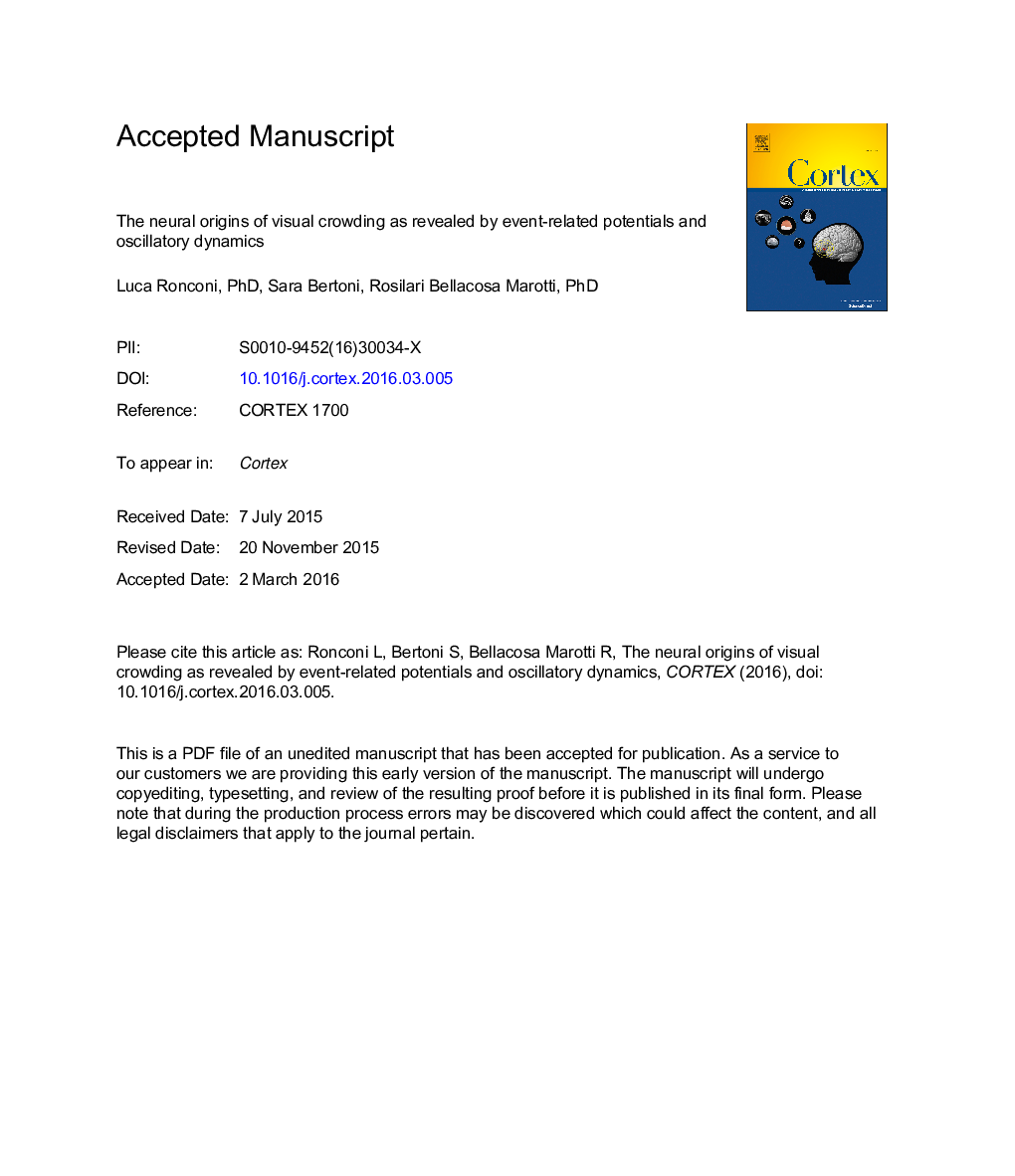| کد مقاله | کد نشریه | سال انتشار | مقاله انگلیسی | نسخه تمام متن |
|---|---|---|---|---|
| 7312975 | 1475453 | 2016 | 34 صفحه PDF | دانلود رایگان |
عنوان انگلیسی مقاله ISI
The neural origins of visual crowding as revealed by event-related potentials and oscillatory dynamics
ترجمه فارسی عنوان
ریشه های عصبی مصنوعی بصری به وسیله پتانسیل های مربوط به رویداد و دینامیک نوسان یافته است
دانلود مقاله + سفارش ترجمه
دانلود مقاله ISI انگلیسی
رایگان برای ایرانیان
موضوعات مرتبط
علوم زیستی و بیوفناوری
علم عصب شناسی
علوم اعصاب رفتاری
چکیده انگلیسی
Visual crowding is the difficulty in perceiving a target in the presence of nearby flankers. Most neurophysiological studies of crowding employed functional neuroimaging, but because of its low temporal resolution, no definitive answer can be given to the question: is crowding arising at the earliest or at later stages of visual processing? Here, we used a classic letters crowding paradigm in combination with electroencephalography (EEG). We manipulated the critical space between peripheral target and flankers, while ensuring a proper control of basic stimulus characteristics. Analyses were focused on event-related potentials (ERPs) and oscillatory activity in the alpha (8-12Â Hz), beta (15-30Â Hz) and gamma (30-80Â Hz) bands. At the ERP level, we found that the first sign of a crowding-induced modulation of EEG activity was a suppression of the N1 component. Oscillatory analysis revealed an early stimulus-evoked gamma enhancement and a later alpha reduction that, however, were not influenced by the amount of crowding. Importantly, reduction in the beta band reflected the amount of crowding (i.e., stronger reduction for strong relative to mid crowding condition) and correlated with individual behavioral performance. Collectively, these findings show that crowding for complex objects emerges at later stages of visual processing, possibly as a result of large-scale network interaction.
ناشر
Database: Elsevier - ScienceDirect (ساینس دایرکت)
Journal: Cortex - Volume 79, June 2016, Pages 87-98
Journal: Cortex - Volume 79, June 2016, Pages 87-98
نویسندگان
Luca Ronconi, Sara Bertoni, Rosilari Bellacosa Marotti,
